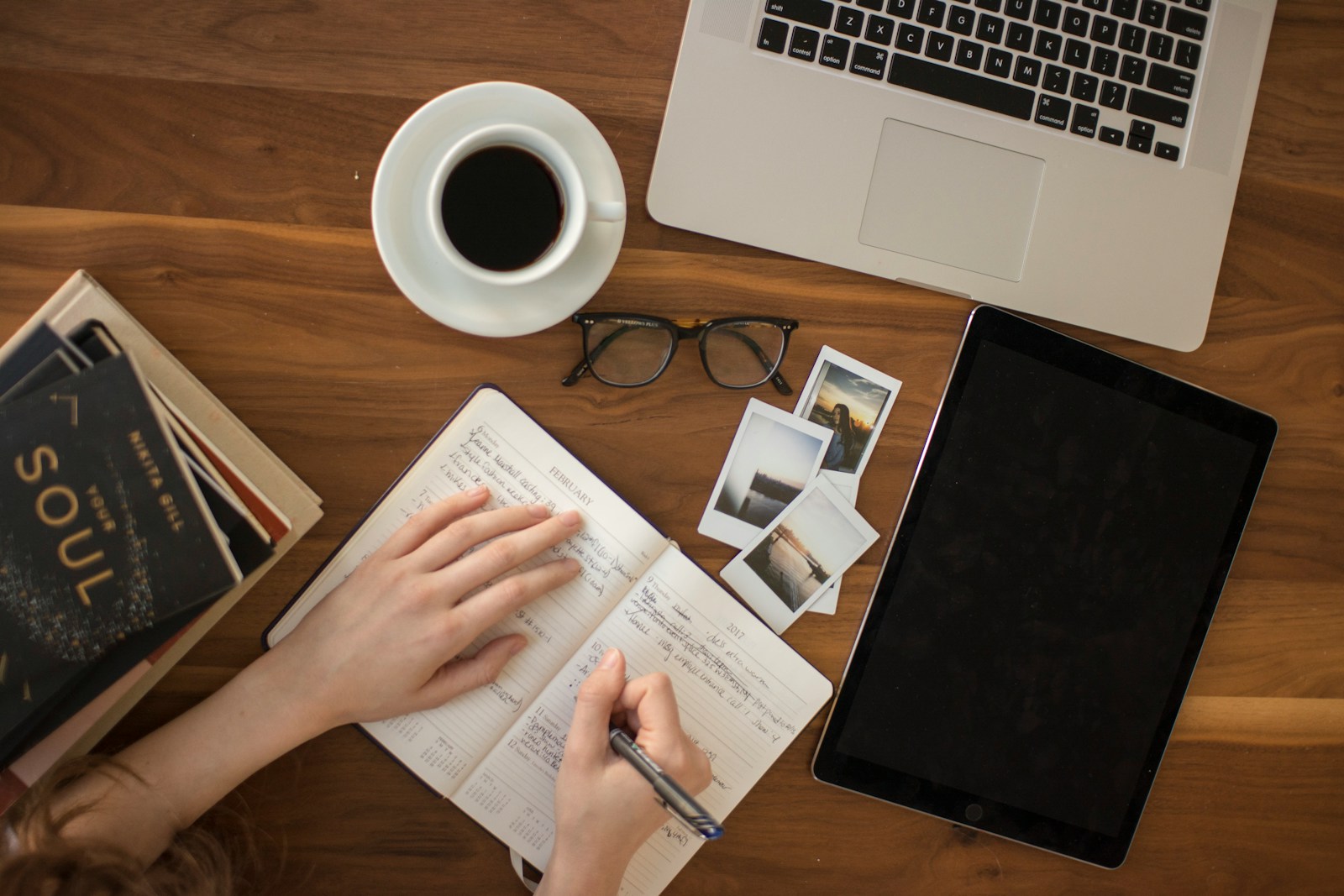Do you struggle with remaining on track while studying? Is it true or not that you are finding it challenging to hold data for your tests? Simply relax; you’re in good company. Numerous students face difficulties with regards to becoming amazing at learning. However, with the right study tips and techniques, you can further develop your learning skills and make scholarly progress.
- Track down your optimal study environment, whether it’s a calm library or a cosy coffee shop; sort out where you work best and make it your go-to.
Finding the right study environment is vital with regards to becoming the best at learning. We as a whole have various inclinations with regards to where we feel generally useful and focused. Certain individuals flourish in a calm library setting, while others favour the cosy feel of a coffee shop.
In the event that you’re somebody who needs complete quiet to focus, a library may be the ideal spot for you. Libraries are intended to hush up spaces where you can drench yourself in your examinations with next to no distractions. With the lack of commotion and babble, you can really focus on the main job and dig deeply into your learning materials.
Then again, in the event that you find that a touch of foundation clamour assists you with concentrating, a coffee shop may be more your style. The delicate murmur of gab and the delicate ringing of cups can create a wonderful air that keeps you spurred and locked in. Furthermore, the fragrance of newly fermented coffee can give a soothing and stimulating lift to your study meeting.
While picking your optimal study environment, it’s critical to consider factors like lighting, solace, and availability. Normal lighting can assist with keeping you ready and focused, so attempt to track down a spot close to a window if conceivable. Being open to seating is likewise key to avoiding distractions and remaining focused on your work. Furthermore, obviously, ensure that the area is helpful for you to get to routinely, whether it’s near your home or school.
At last, the objective is to establish a study environment that permits you to be useful and productive in your learning. Explore different avenues regarding various settings to see what works best for you. In the event that you observe that you’re quickly drawn off track in a coffee shop, have a go at changing to a more confined spot in the library. In the event that you feel smothered in the calm of a library, go to a clamouring bistro to check whether it helps your efficiency.
Keep in mind that everybody has their own unique inclinations and requirements with regards to studying. What works for one individual may not work for another. The key is to find an environment that helps you flourish and stick with it. By getting some margin to sort out your optimal study environment, you’ll put yourself in a good position to excel at learning.
- Break your study sessions into manageable chunks. Rather than packing for quite a long time, schedule shorter study blocks in the middle to maintain your focus.
With regards to studying for progress, one of the main systems to remember is breaking your study sessions into manageable chunks. Numerous students tend to pack for quite a long time, believing that the more they study, the more data they will hold. However, this isn’t generally the situation.
Packing for extended periods of time can really be counterproductive. Your brain needs time to process and ingest data, and studying for a really long time without breaks can prompt burnout and diminished maintenance of material. Rather than attempting to handle everything at the same time, it is significantly more viable to schedule shorter study blocks in the middle.
By breaking your study sessions into manageable chunks, you are permitting yourself to remain on track and connected all through the whole meeting. Studying for shorter timeframes can assist you with keeping up with your focus and keeping your psyche from meandering. You will likewise be bound to hold the data that you are studying, assuming you enjoy it in the middle.
While planning your study blocks, hold back nothing for between 25 and 45 minutes. This is known as the Pomodoro Method, where you work temporarily (ordinarily 25 minutes) and then have some time off (generally 5–10 minutes) prior to beginning another meeting. This strategy has been demonstrated to build efficiency and focus, as it assists you with keeping focused and staying balanced.
During your study breaks, it is critical to separate your study materials completely. Go for a stroll, stretch, snatch a tidbit, or do something that loosens up your care. This will assist with re-energising your brain and set you up for the following study meeting. Abstain from actually taking a look at your telephone or remaining on your PC during breaks, as this can prompt distractions and make it harder to refocus when you return to studying.
As well as enjoying reprieves between study sessions, fluctuating the subjects or points that you are studying is additionally useful. Stirring up your study material can assist with preventing weariness and keeping your brain locked in. It likewise permits your brain to make associations between various ideas, prompting better maintenance and comprehension of the material.
In conclusion, make certain to schedule your study blocks during times when you are generally ready and focused. A few students might find it simpler to study in the first part of the day, while others might find it more useful in the early evening or night. Focus on your own regular rhythms and plan your study sessions in a similar manner.
Breaking your study sessions into manageable chunks is a vital system for progress with regards to learning. By booking shorter study blocks in the middle, you can keep up with focus, forestall burnout, and increase the maintenance of the material. Make sure to detach during your breaks, shift your study material, and schedule sessions during your pinnacle hours of focus. By becoming amazing at learning along these lines, you will get yourself positioned for scholarly achievement.
- Utilise an assortment of study techniques—shake things up with reading, writing, listening, and visual guides—to draw in various pieces of your brain and improve your learning.
With regards to studying successfully, utilising an assortment of study techniques can be critical to excelling at learning. By stirring things up with reading, writing, listening, and visual guides, you can draw in various pieces of your brain and improve how you might interpret the material.
Reading is an exemplary study method that a significant number of us know all about. Whether you’re poring over course books, articles, or notes, reading can assist you with engrossing data and making associations between various ideas. It’s essential to actively draw in with the material as you read—ask yourself inquiries, make notes, and sum up central issues—to guarantee that you’re genuinely understanding and holding the data.
Writing is another strong study strategy that can assist you with cementing how you might interpret the material. At the point when you work out your viewpoints, thoughts, and clarifications as would be natural for you, you’re actively handling the data and committing it to memory. Whether you’re taking notes, making flashcards, or writing synopses, writing can be a significant device in supporting your learning and planning for tests.
Listening to addresses, digital broadcasts, or recorded material can likewise be a compelling study procedure for hear-able students. By listening cautiously and actively engaging with the substance, you can fortify your comprehension of how you might interpret the material and catch significant subtleties that you could have missed while reading. Taking notes or talking about the material with others can assist you with cementing your comprehension and making associations between various ideas.
Visual guides, like outlines, graphs, and brain maps, can be incredible assets for visual students. By addressing data outwardly, you can improve how you might interpret complex ideas and make associations between various thoughts. Visual guides can assist you with putting together data, distinguishing key connections, and making a visual guide for your learning. Explore different avenues regarding various kinds of visual guides to see what works best for yourself and upgrades your perception of the material.
Conclusion
By utilising an assortment of study techniques—reading, writing, listening, and visual guides—you can connect with various pieces of your brain and improve your learning in a comprehensive manner. Rather than depending on only one study strategy, shake things up to keep your brain active, drawn in, and open to new data. Keep in mind that everybody advances in an unexpected way, so it means quite a bit to try different things with various study techniques to find what works best for you. Embrace assortment in your study routine and receive the rewards of a balanced way to deal with learning.



